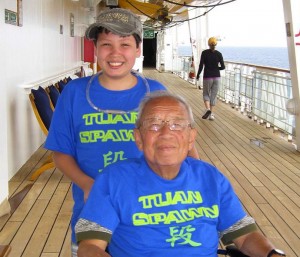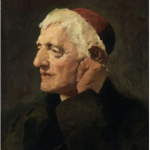Last weekend my husband and I went to Oklahoma City for a pre-Valentine’s rendezvous. We didn’t know a thing about the city except that the Oklahoma City Memorial, built on the site where the Alfred P. Murrah building used to stand before Timothy McVeigh blew it up, was there. It was our first stop.
I’ve never seen other memorials…not the Lincoln Memorial nor the Washington monument, not even the Arlington National Cemetery, so I wasn’t sure what to expect.
One hundred and sixty-eight bronze ‘chairs’ sit in long rows, each chair representing a person killed by the April 9th, 1995, blast. Large chairs represent the adults. Small chairs represent the children. They all face a large rectangular reflecting pool with water as still as glass. On the west side of the pool is a wall with the time 9:01 on it. On the east side, a wall says 9:03. One of the museum workers told us the two walls frame the time of the explosion: 9:02.
A huge, beautiful elm tree grows opposite the reflecting pool in what used to be the parking lot. Because it survived the blast, even when surrounded by burning cars, it has become the symbol of those who lived through the ordeal. They call it the Survivor’s Tree.
Further on, we find the children’s area, where children all over the country painted ceramic blocks with notes to those who lost their precious ones that day. Four huge chalkboards are embedded in the sidewalk; a white piece of chalk lays in a groove formed by the grout between sidewalk sections. Some teenagers, oblivious of the indecency of such things, have written silly comments on one chalkboard. Someone with more respect has written: “He heals the brokenhearted, He binds up their wounds.” The fence outside the memorial is strewn with sun-faded objects that make no sense to those who didn’t put them there. Key chains. Stuffed animals. Christmas wreaths. Other items, hooked onto the fencing by ribbons or plastic ties do make sense; one mother has laminated several poems about her daughter and attached them tightly to the fence. She does not want her girl forgotten.
Unfortunately, forgetting is exactly what many people want to do when facing loss.
Ian worked in the funeral industry for five years and every year we saw an increase in ‘direct cremation’–cremation without embalming, viewing, or service. One grief expert attributes this to Baby Boomers who are put out with their stuffy parents and all too glad to get past both them and the grieving process.
As if ignoring it makes it go away.
To be honest, I felt uncomfortable at the Memorial. It was hard to read the tributes, the names on the tiny chairs. I fought tears, much like our society does, afraid of the kind of sorrow that in some cultures causes women to wail like animals over the loss of husband or child.
I don’t know that kind of loss. My losses are the garden variety of divorced parents, estranged family members, lost friendships. The temptation is to rush past the pain, to shove it under the backseat like a crumpled McDonald’s bag. I don’t like to sit down with the ache of loss and have a leisurely conversation. I want to run away from it into the street, plugging my ears with my fingers and singing, “la, la, la, ” like you do when your annoying brother is trying to tell you a scary story or a gross joke.
The idea of creating a place to grieve, to memorialize the lost, to capture in mortar the moments before and after tragedy seems odd until you visit. Walking amongst the trees, weaving in and out of the 168 chairs, standing beneath the boughs of the Survivor’s Tree, peace washes over me. Even as I hide tears for people I never knew behind a pair of dark sunglasses, I feel a healing balm being tenderly rubbed into my soul, like a mother applies lotion to a tiny sunburned back. All those aching places, the regrets, the white-hot pain of loss suddenly throb a little less. I see now, a little bit anyway, that the path through grief, not around it, is where healing is found. Ceremony, ashes, tributes, eulogies, poems, obituaries, and tears line this path. And the healing balm–which never entirely eradicates the pain, but at least makes it bearable–is at the end.












